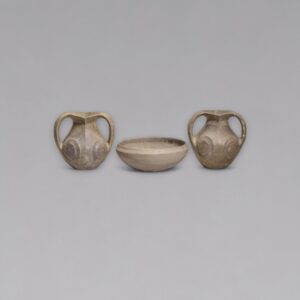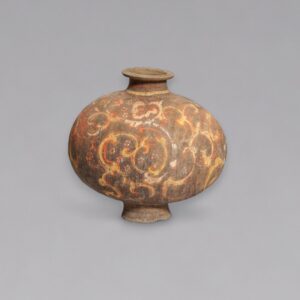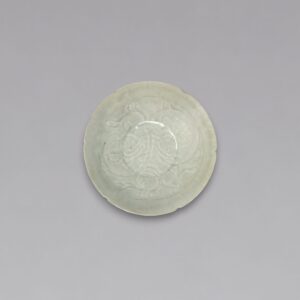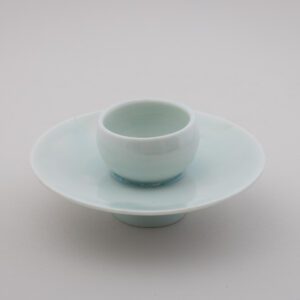The washer is finely potted with shallow rounded sides rising from a slightly concave base, and carved on the base of the interior with a peony bloom. It is covered with a pale bluish-green with the exception of a grooved band on the mouth of the interior.
A carved Qingbai floral washer (Southern Song dynasty, 1127-1279)
Description
Dimensions:12.5cm diameter
Provenance: A private European collection
The washer is finely potted with shallow rounded sides rising from a slightly concave base, and carved on the base of the interior with a peony bloom. It is covered with a pale bluish-green with the exception of a grooved band on the mouth of the interior.
Compare a near identical example sold at Christie’s New York, 16 March 2015, lot 3256 and another from the Muwen Tang Collection, offered at Christie’s Hong Kong, 6 April 2015.
Qingbai washers, developed during the Song dynasty (960–1279), were elegant ceramic vessels used primarily by scholars and calligraphers to rinse brushes and hold water during painting or writing. Made from the fine, translucent porcelain known as qingbai (“bluish-white”), these washers were produced mainly in Jingdezhen and other kilns in Jiangxi province. The Qingbai glaze – clear with a delicate bluish tint – gave the objects a refined, almost ethereal appearance that reflected the Song aesthetic ideals of simplicity, purity, and understated beauty.





